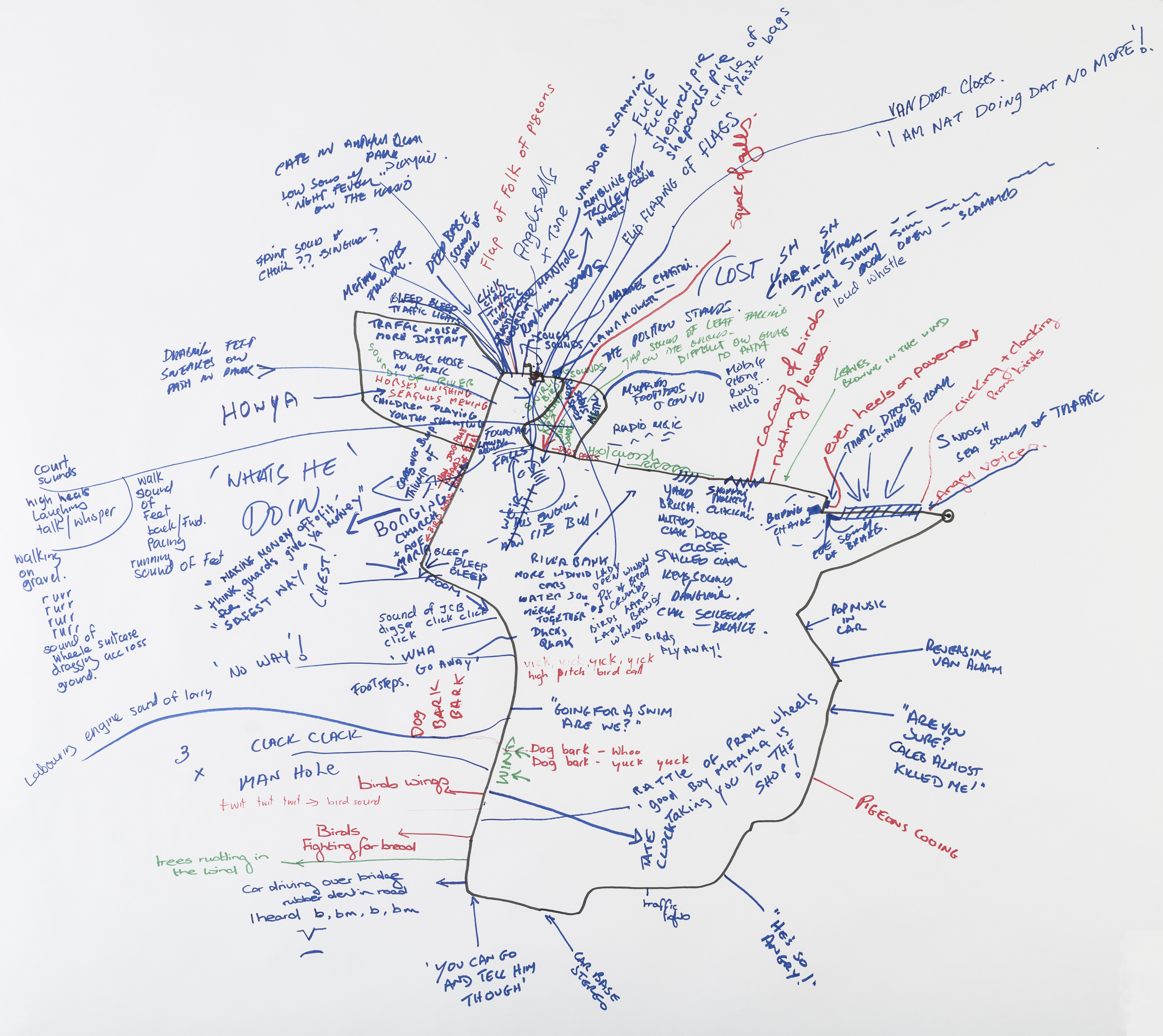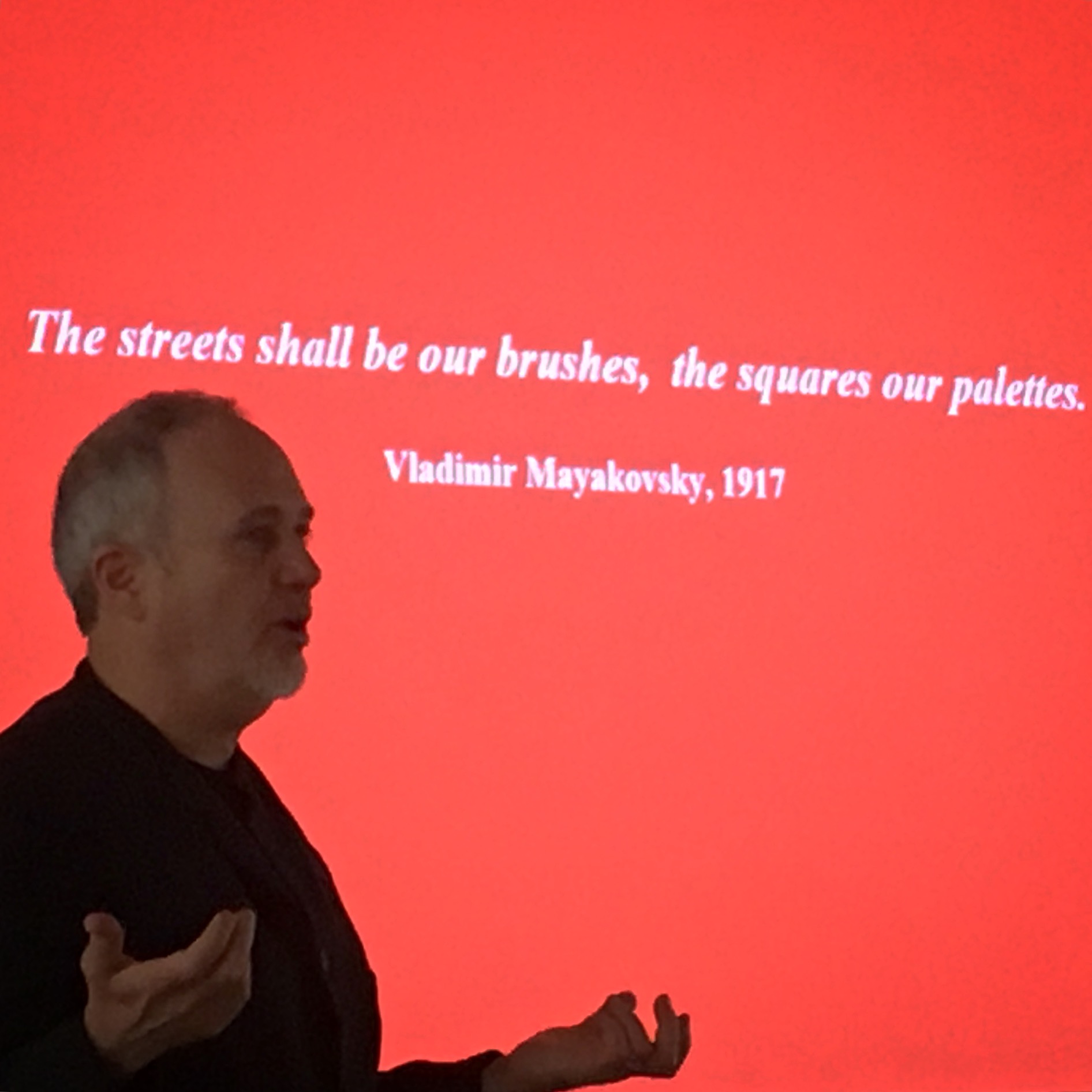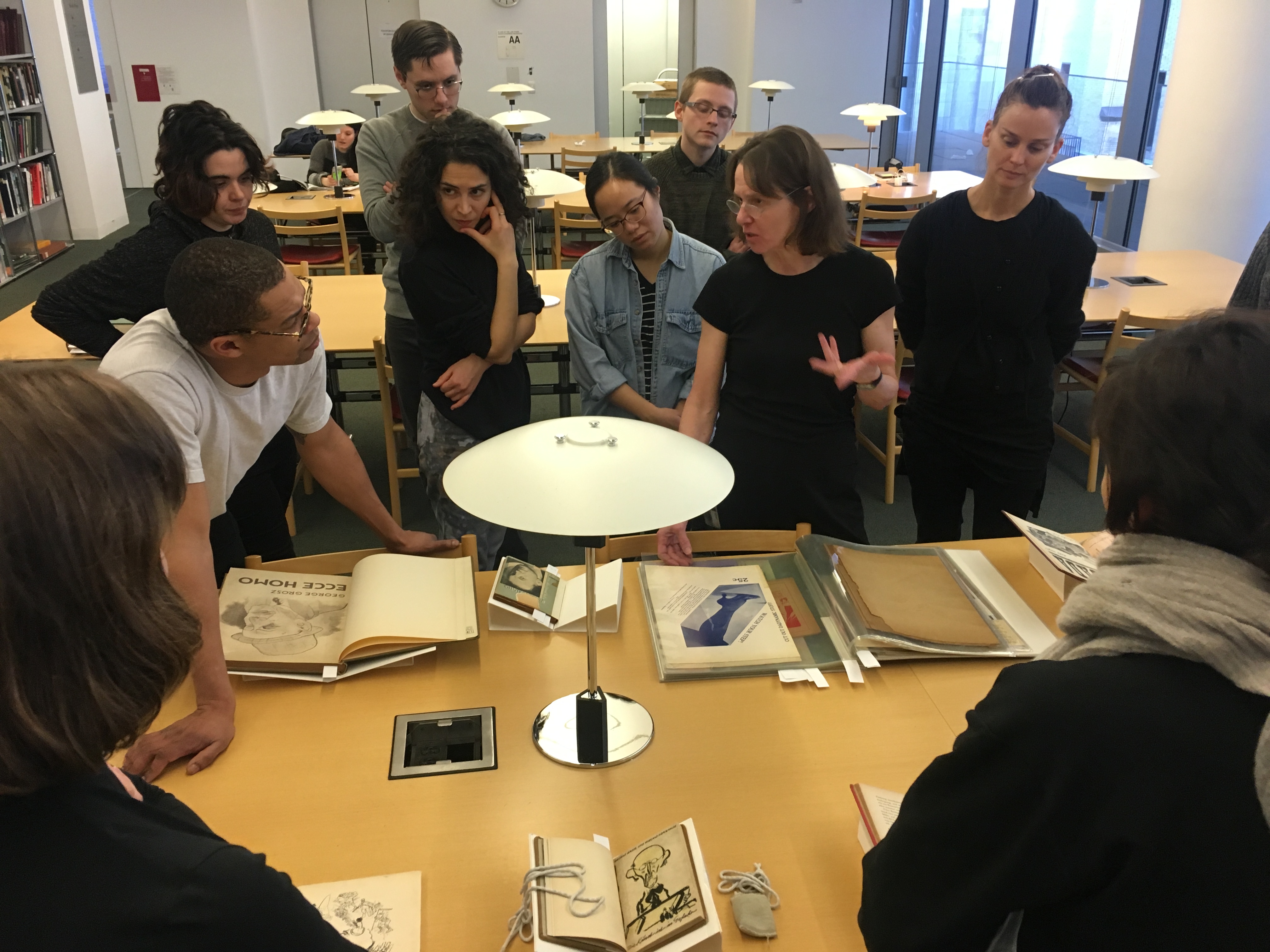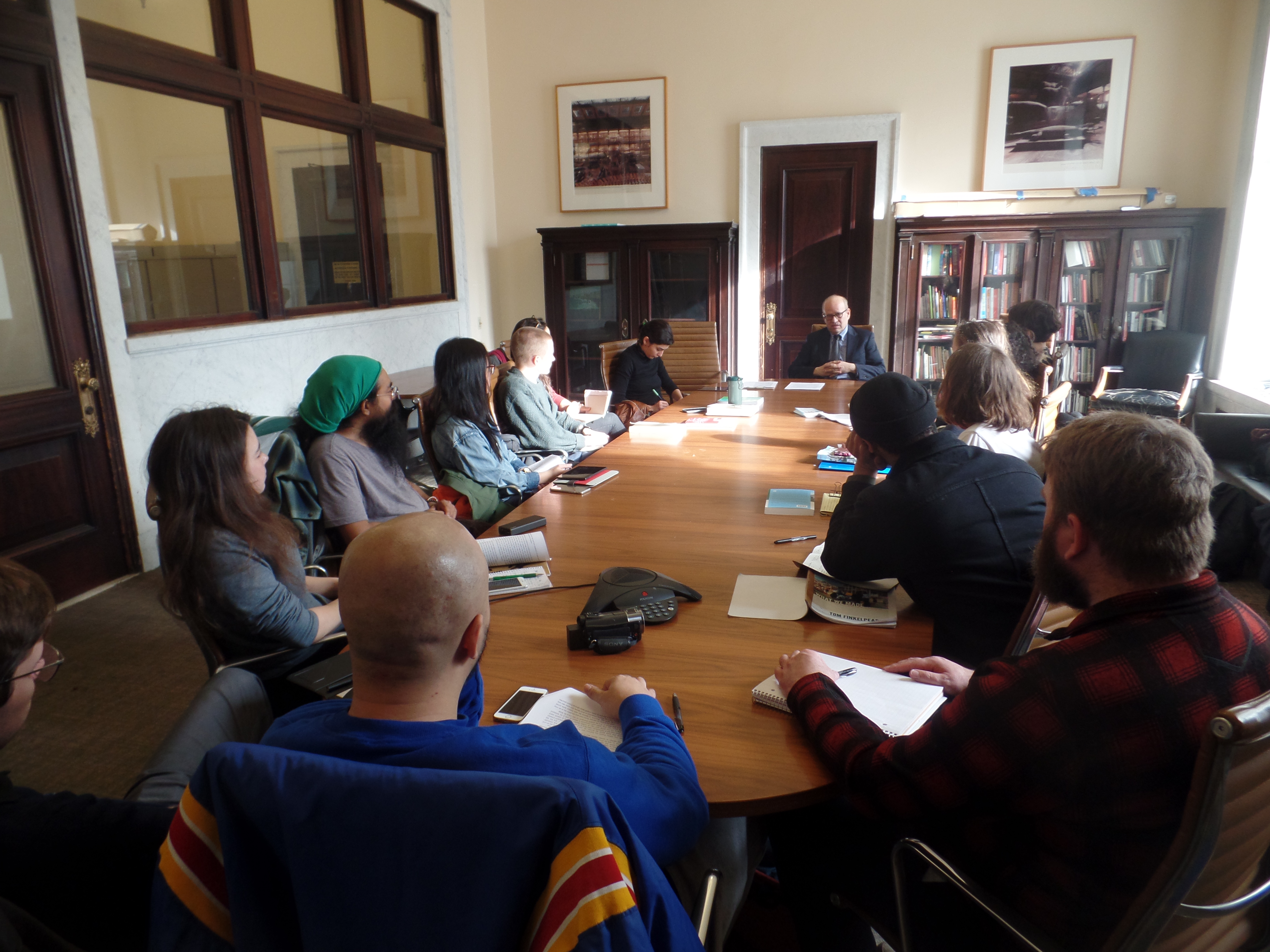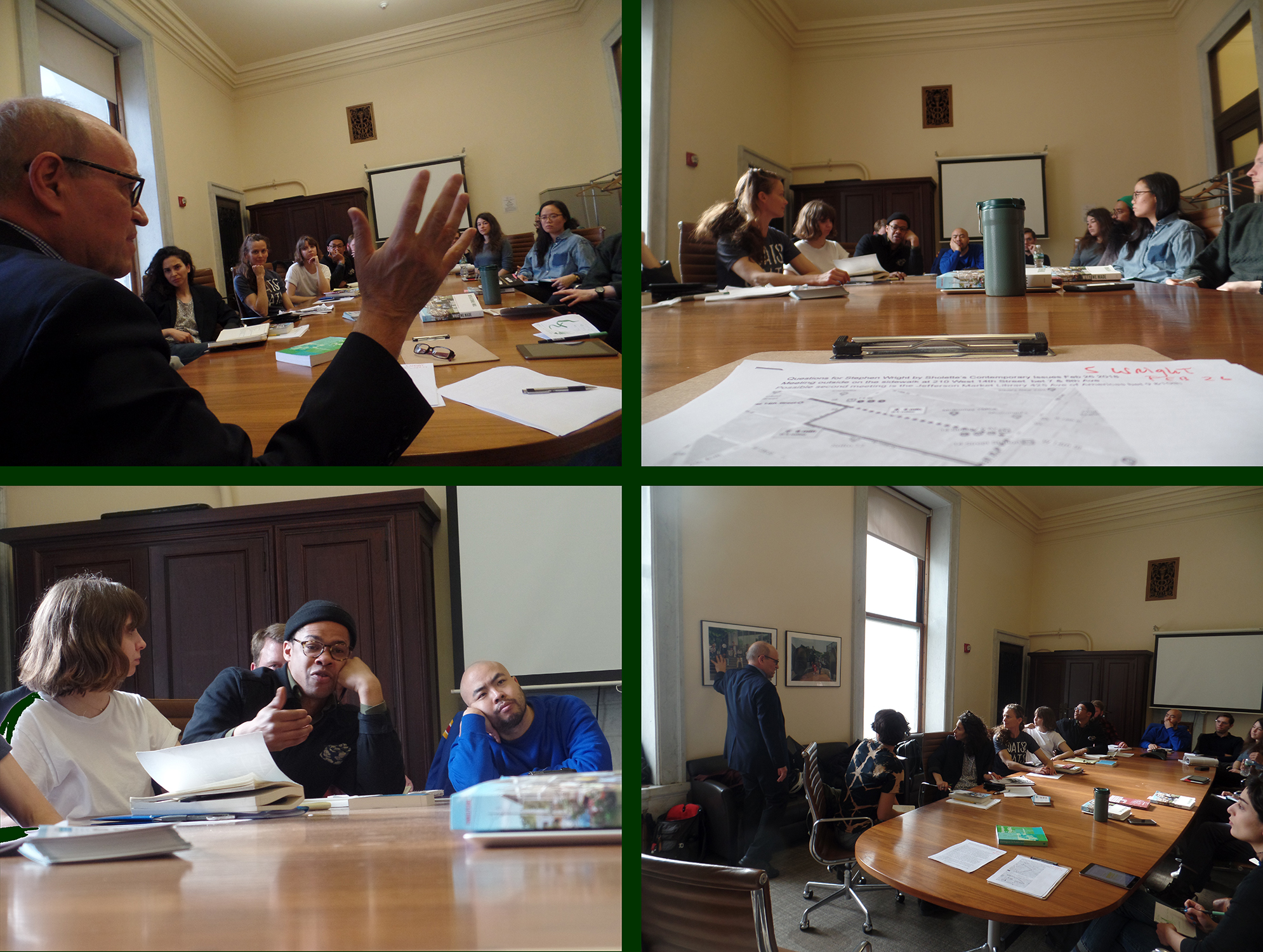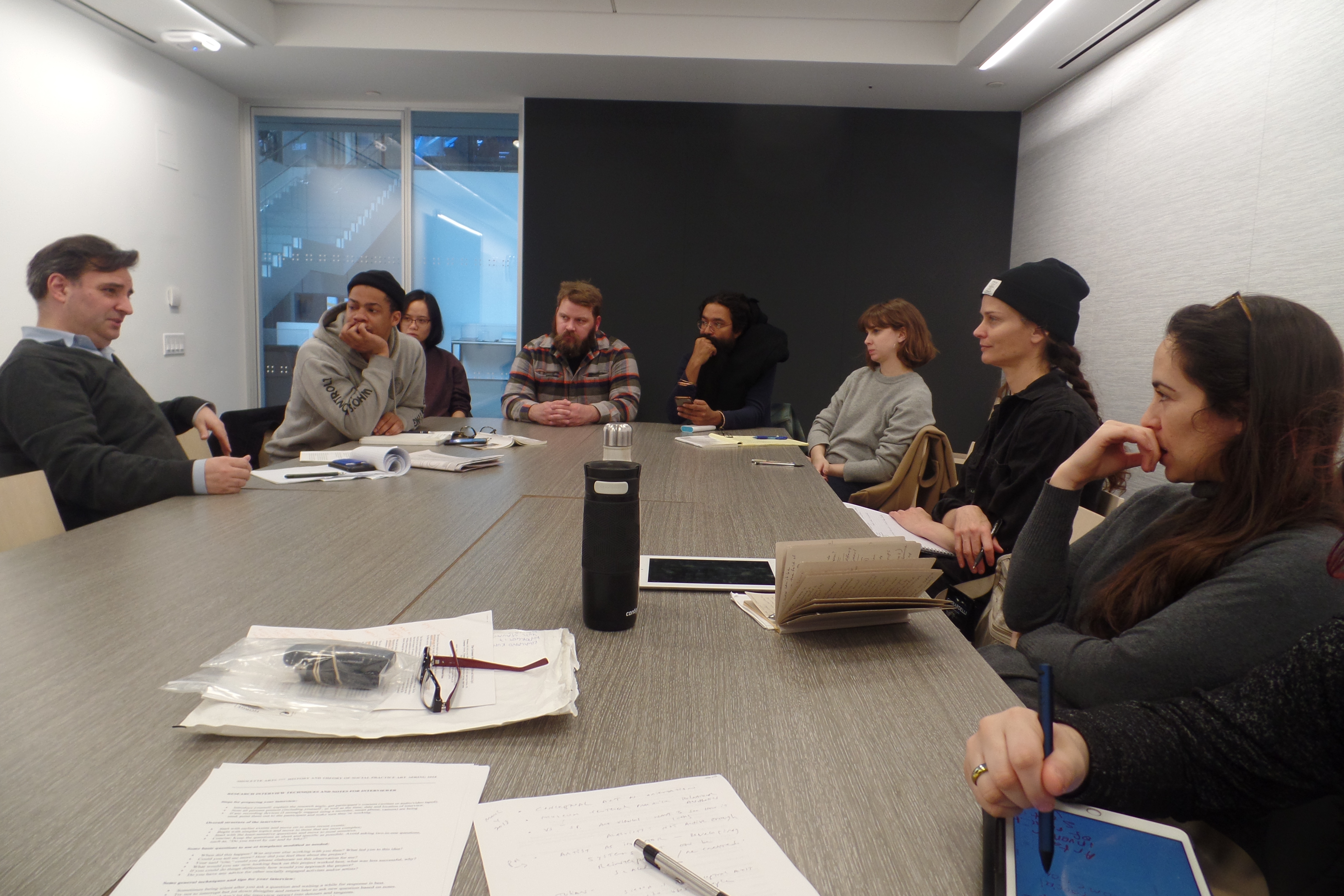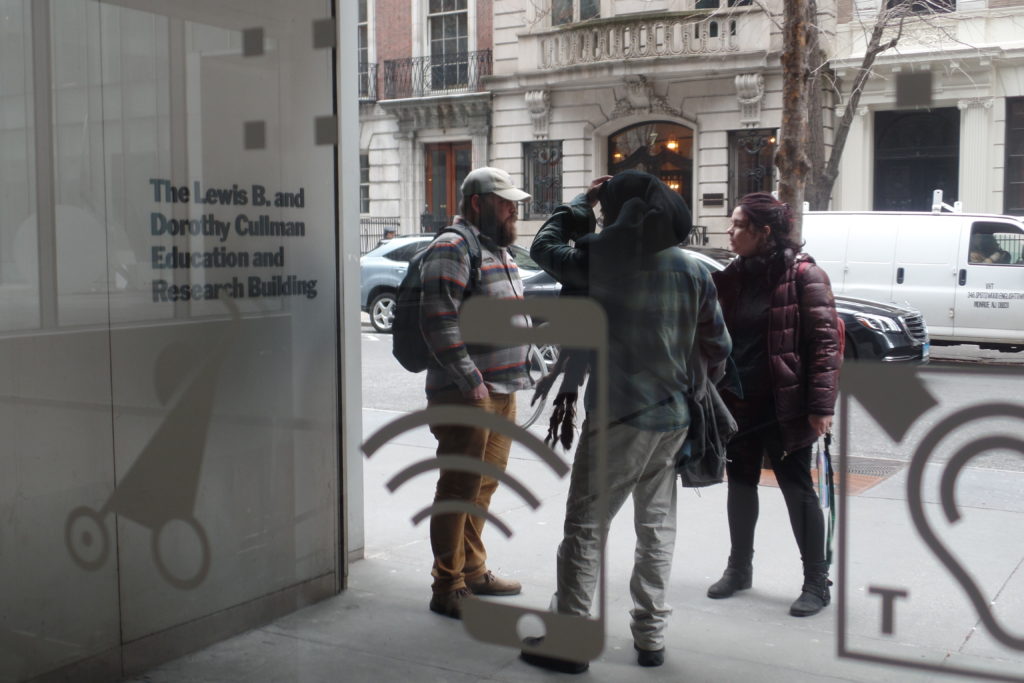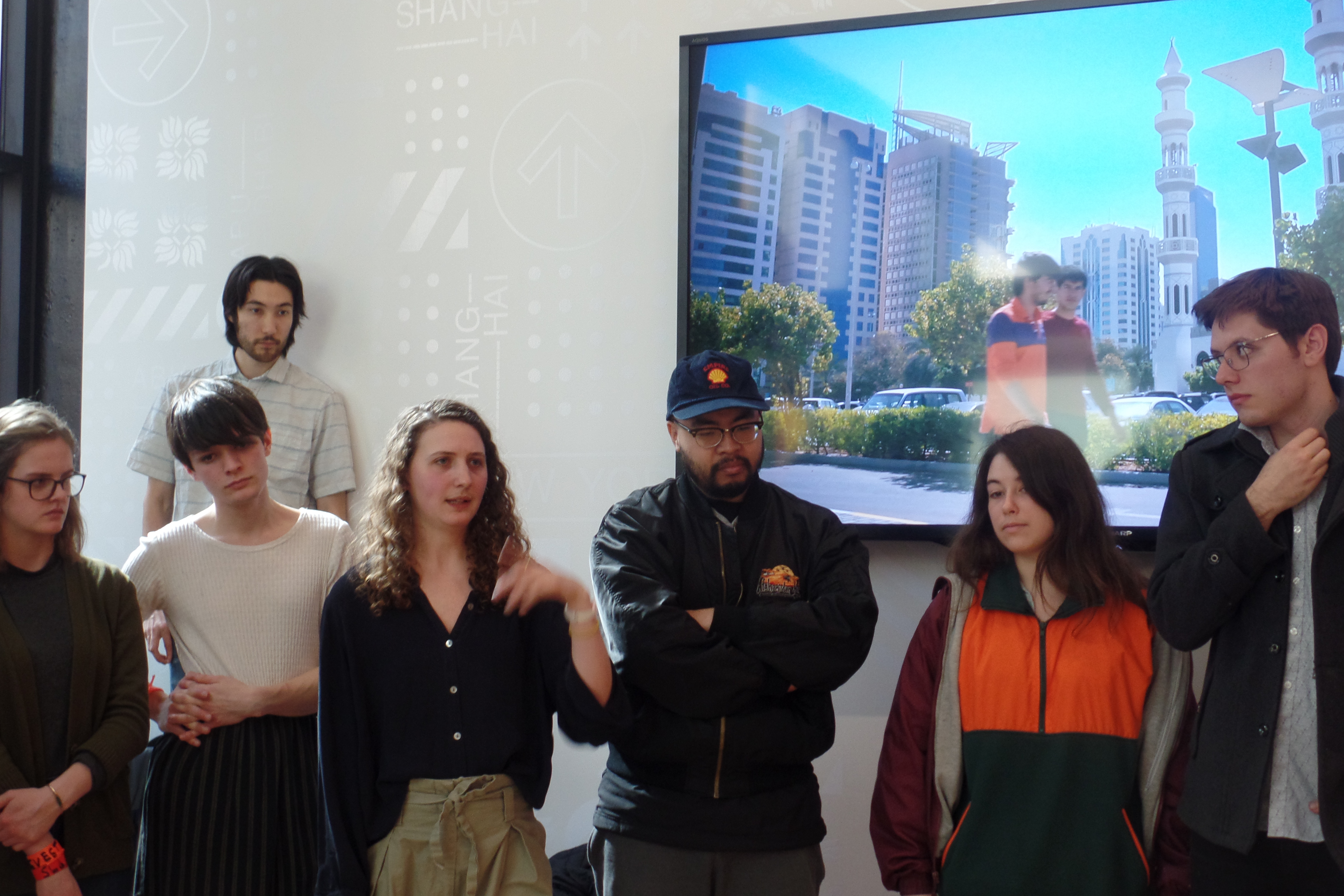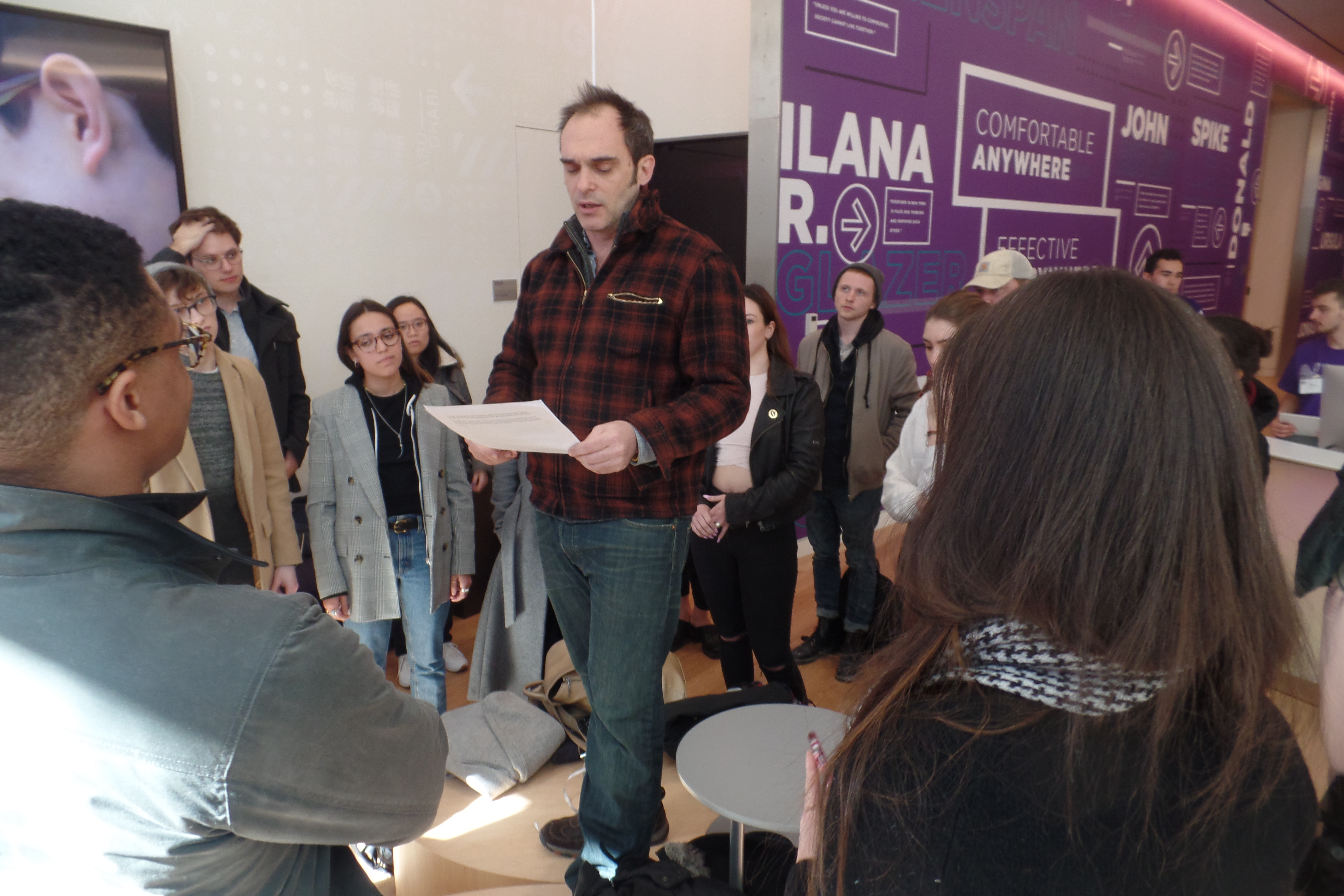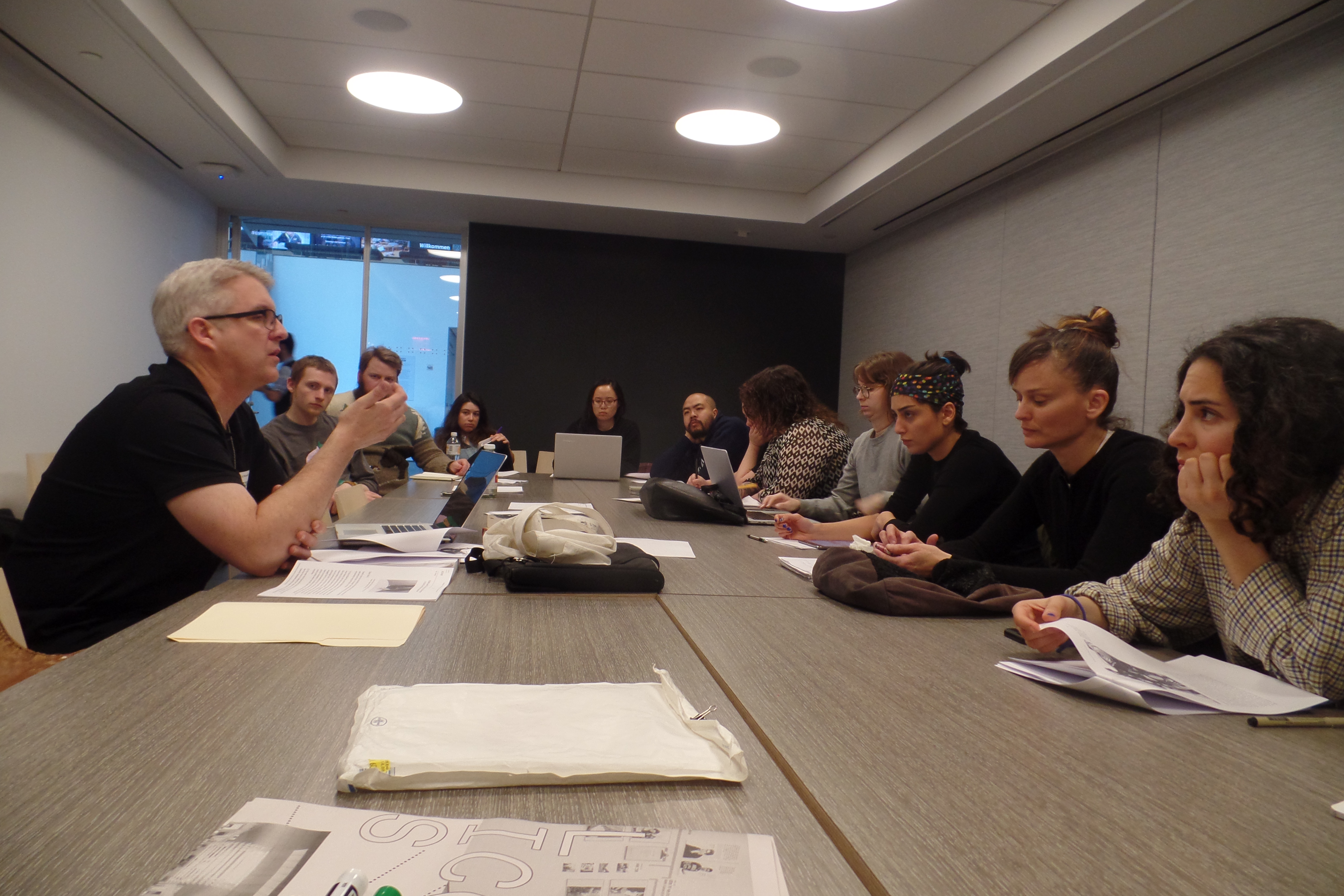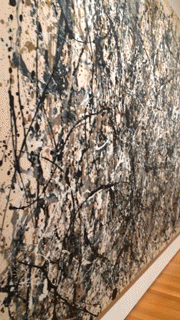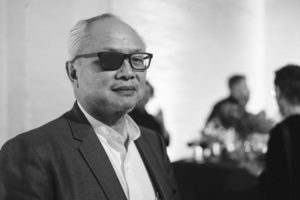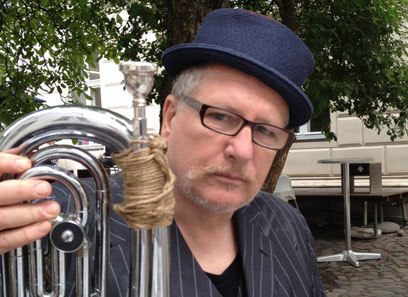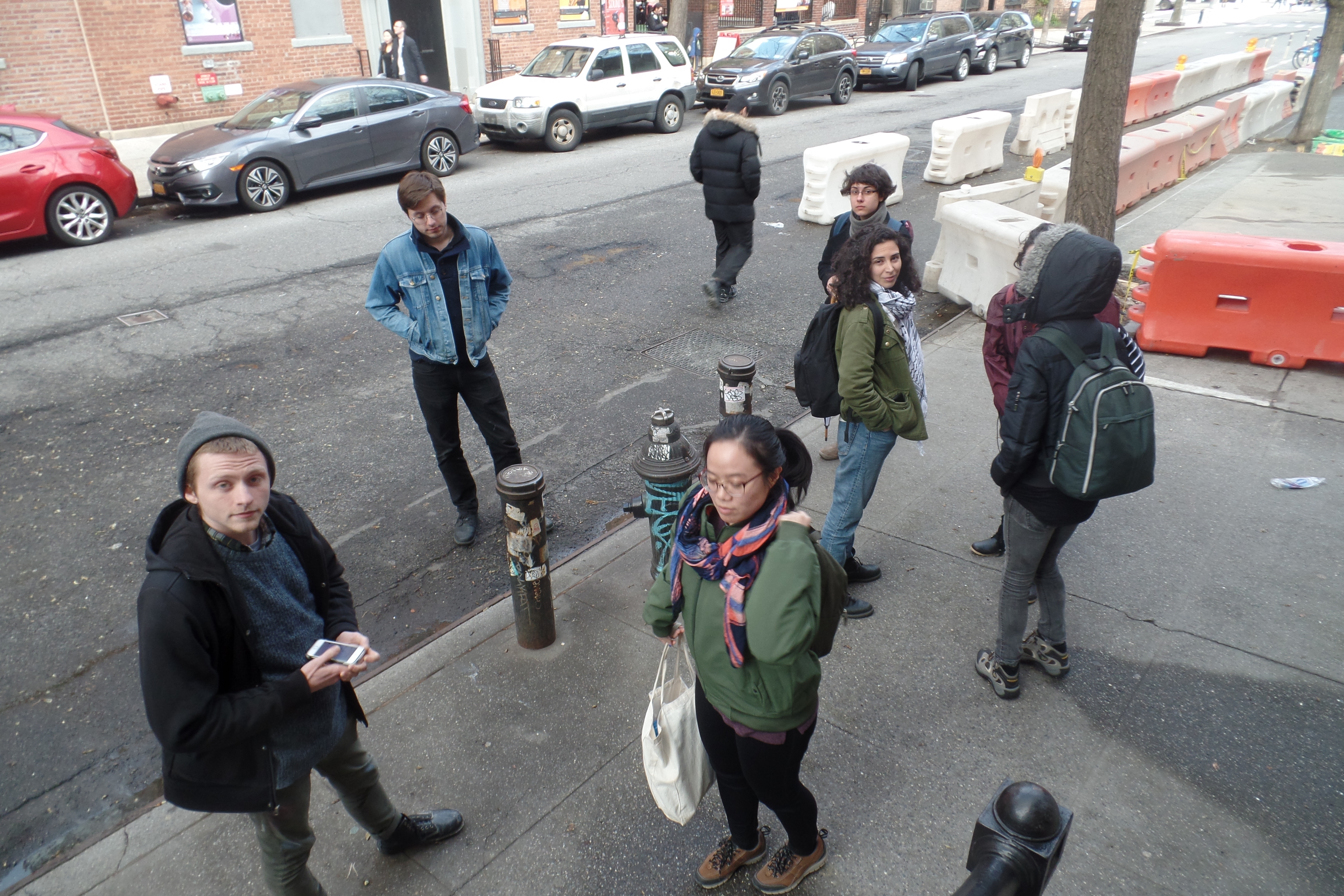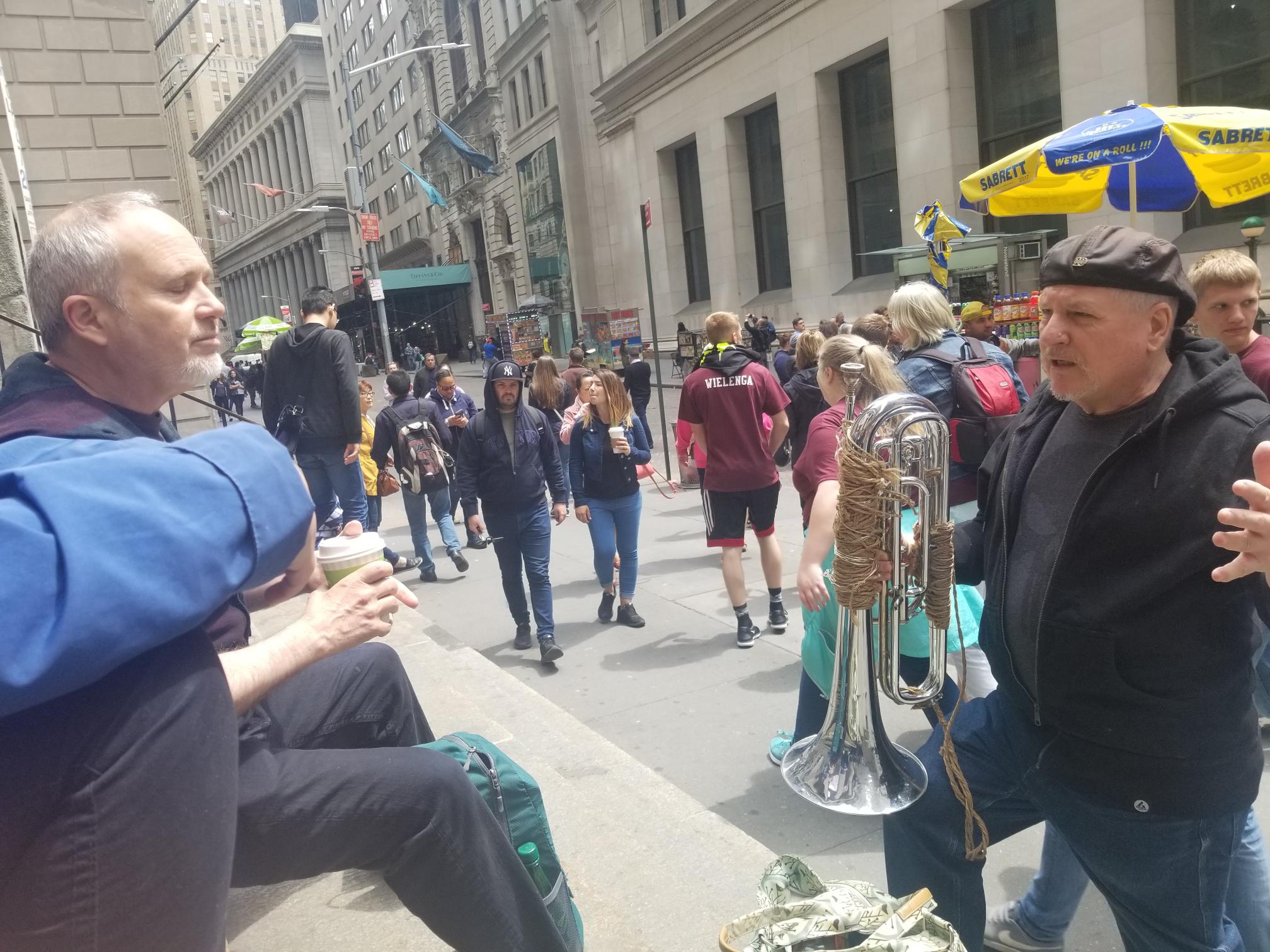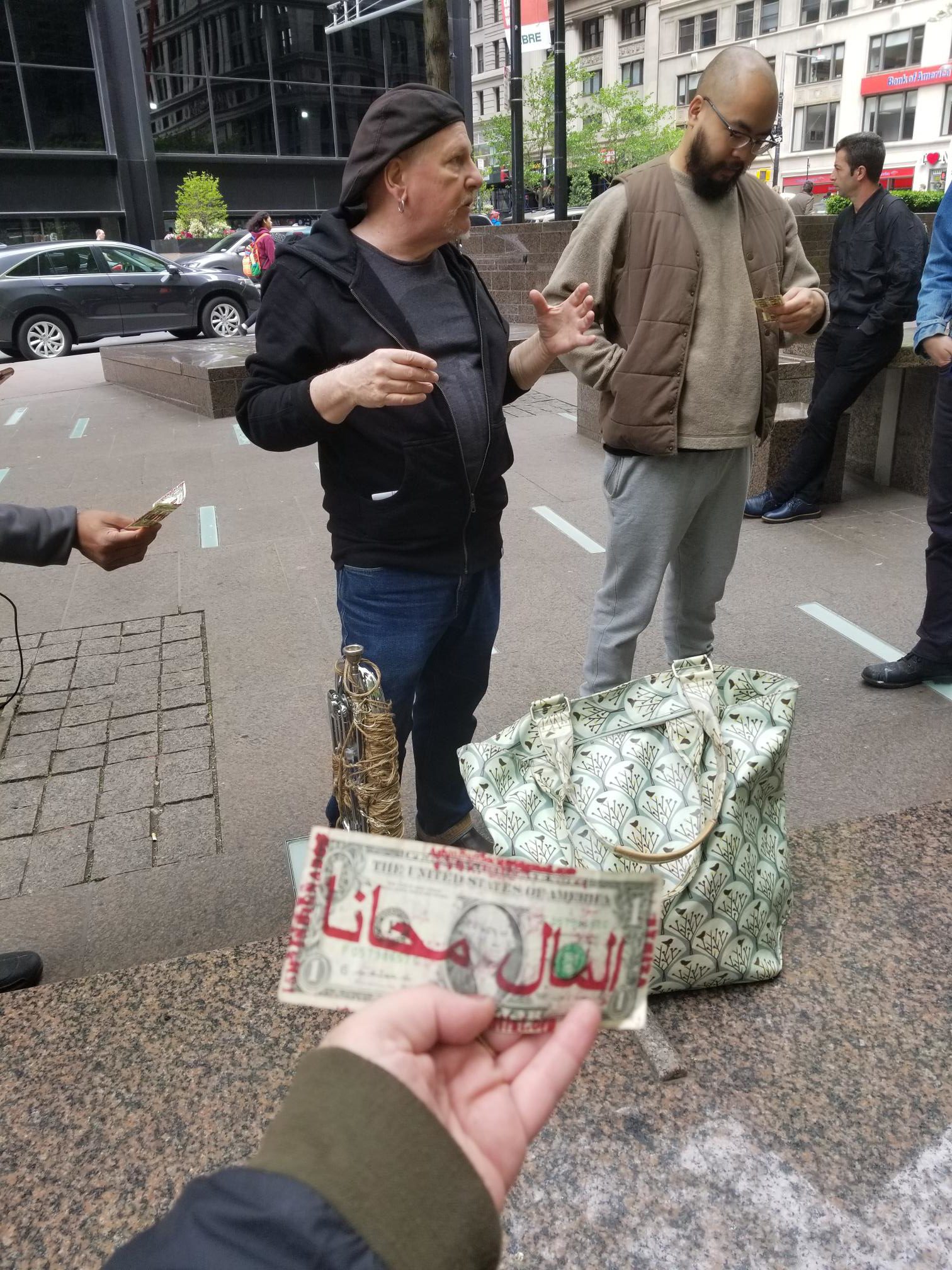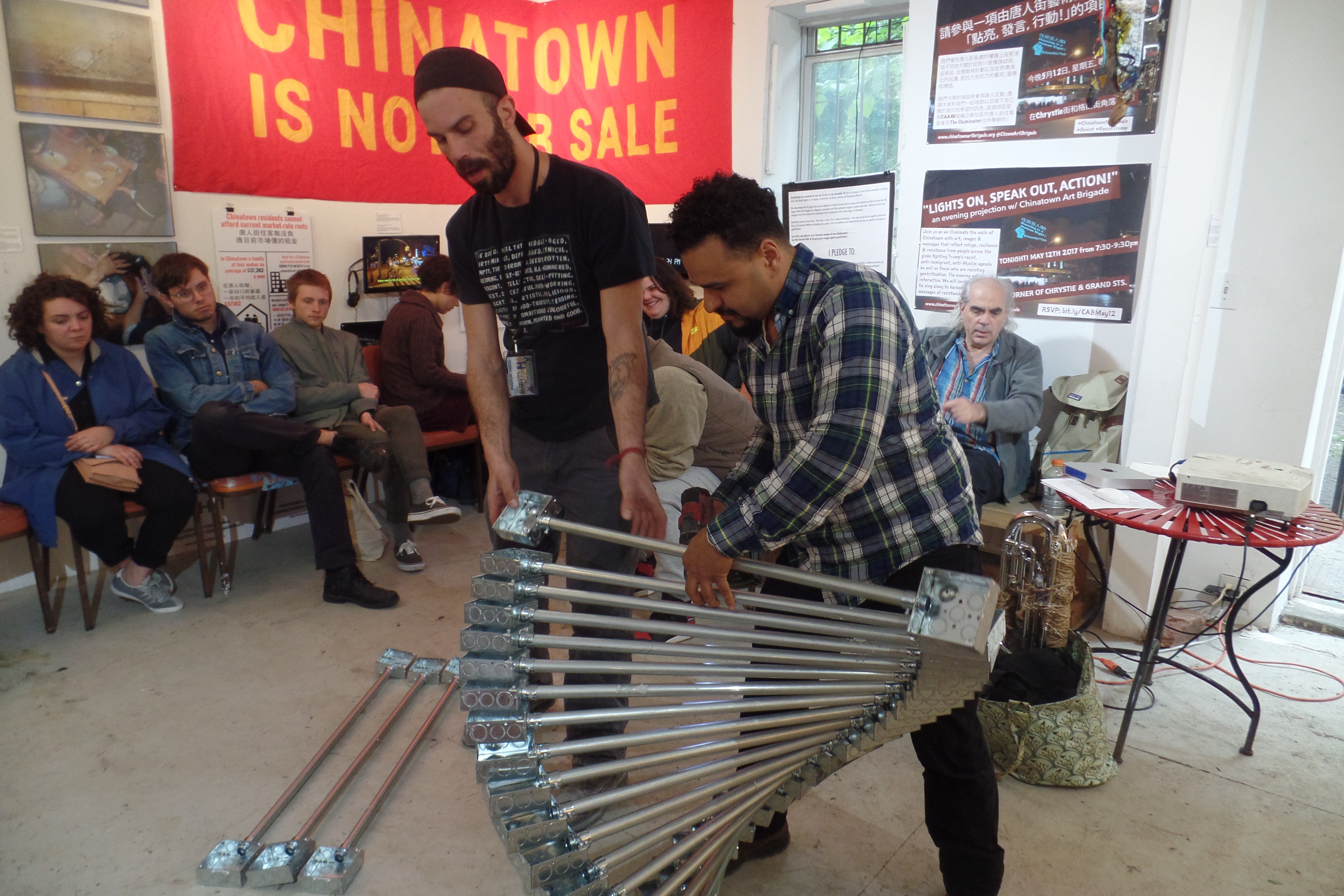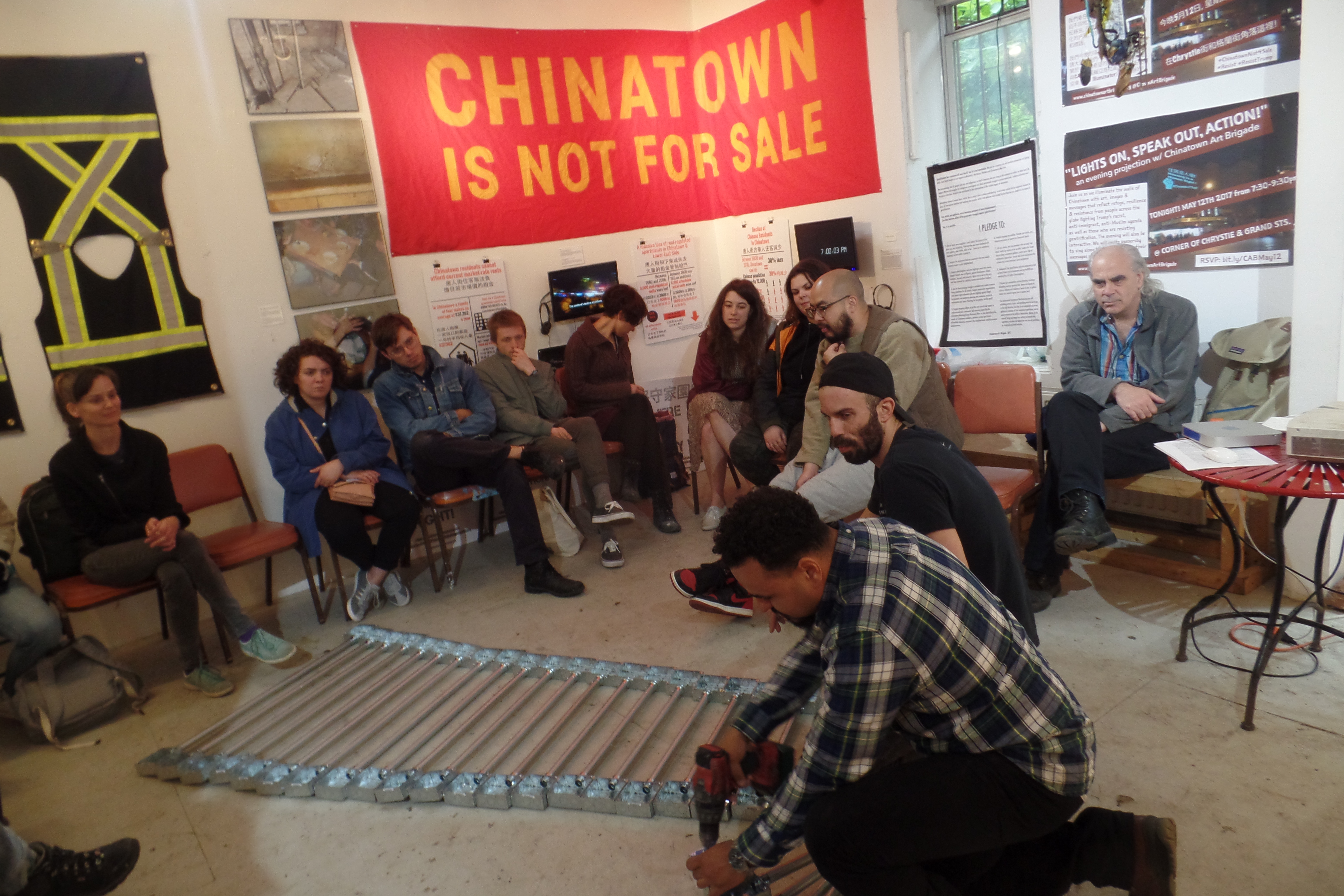History & Theory of Social Art Practice ARTS 777 (Documentation of Spring 2018 Seminar)
Art as History? Art as Thinking? Art as Research? Art as Work? The aim of this seminar is to survey, critique and historicize the theory and practice of activist, interventionist, public, participatory and community based art that operates within and across fields such as performance, urban studies, environmental science and other socially engaged disciplines. The class will focus on such questions as: Why is it useful, even necessary, to understand the history and theory of social practice art? Where should we look to find the historical roots of social practice art? Are these within the history of art, or external to it, in the broader social sphere? In an increasingly privatized society how do we define and operate within a concept of the public sphere? And how are both mainstream and alternative type cultural institutions responding to the increasing interest in socially engaged art by emerging artists? Through lectures, readings, discussions, student presentations, group activities, guest speakers and off-site visits to galleries and museums we will seek to position socially-engaged visual culture and the shifting role of the artist within an historical, ideological, and critical framework. Download a copy of the syllabus here: SYLLABUS_Arts.777
ARTS 777, Mondays, 2 – 5PM
Klapper Hall 403 and various locations
Gregory Sholette: instructor.
Email: gsholetteSTUDIO@gmail.com
Jeff Kasper visiting instructor
Learning Goals & Objectives
- Develop theoretical and historical knowledge of emerging social practice art field.
- Explore and debate complexities, paradoxes and possibilities of socially engaged art.
- Engage in original research related to social practices and individual student projects.
- Foster an environment for investigating cross-disciplinary exchange and critical thinking.
- Acquire working knowledge of seminal texts relevant to this field and in relation to the broader background of art history.
Assignments and Expectations
You will generate at least one question or observation for each week’s reading or viewing.
Each student will produce a critical essay (10 pages) that includes an interview with at least 1 stakeholder (artist/organizer/participant) from a contemporary SEA or community based case study exploring, “What does/can the art/artist do in the context of in the making, analysis, and evaluation of socially engaged projects?”
The student is responsible for becoming familiar with the project beforehand and creating a series of 4-6 questions that will frame the interview to be reviewed by the Professor. Who you interview will also be decided in consultation with the Professor.
The final essay describes a) the motivation, intention, and or internal or external force(s) that promoted the project; b) the practical methods the social practice artists uses (Question: How does the artistic/research /engagement methods that we can perceive with our senses, operate, and/or generate or reveal meaning for the viewer/public/participant?) c) Consider the implications the aesthetic interventions have in influencing political or social realities of a given context, event, community, or project. d) Analyze based on a project’s goals what metrics the artist/producer/community uses for its evaluation.
Short topic discussion and research update will take place mid semester.
All papers are due at the end of the semester.
- Please use this online Google.doc form to submit your weekly questions:
- Please review these guidelines for your interviews:
- Here is a transcription service btw (thanks Setare):
THE SYLLABUS
1/29 Week One: Art: + or – Society?
Please begin the first weeks readings before our first class meets:
1. Walter_Benjamin_-_The_Author_as_Producer [re reference to Plato “You will remember how Plato, in his project for a Republic, deals with writers…” see: PLATO & ART & Plato: Book Ten Plato X (selection) ]
2. A People’s Art History of the United States by Nicolas Lampert: Chapter’s One, Two, and Nineteen PAH.Archive
2/5 Week Two: Art: + or – Society? continued….* Meeting at 2PM SHARP at the Museum of Modern Art MoMA: The Lewis B. and Dorothy Cullman Education and Research Building at 4 West 54 Street [just west of 5th Ave] We will meet Jennifer Tobias in the Lobby then go to 6th floor. Coats and bags must be placed on the reading table and hands washed. Its a special space!
If weather permits we will reconvene in the MoMA Garden for further discussion or at Trump Tower: 725 5th Avenue Avenue at 57th Street in the Public Garden space downstairs.
SPECIAL EVENT
Feb 9 & 10th at the MoMA: Tania Bruguera’s Escuela de Arte Util will take place at the museum and they are seeking applications for participants. Details can be found online here: moma.org/arteutil
2/12 NO CLASS: School is Closed.
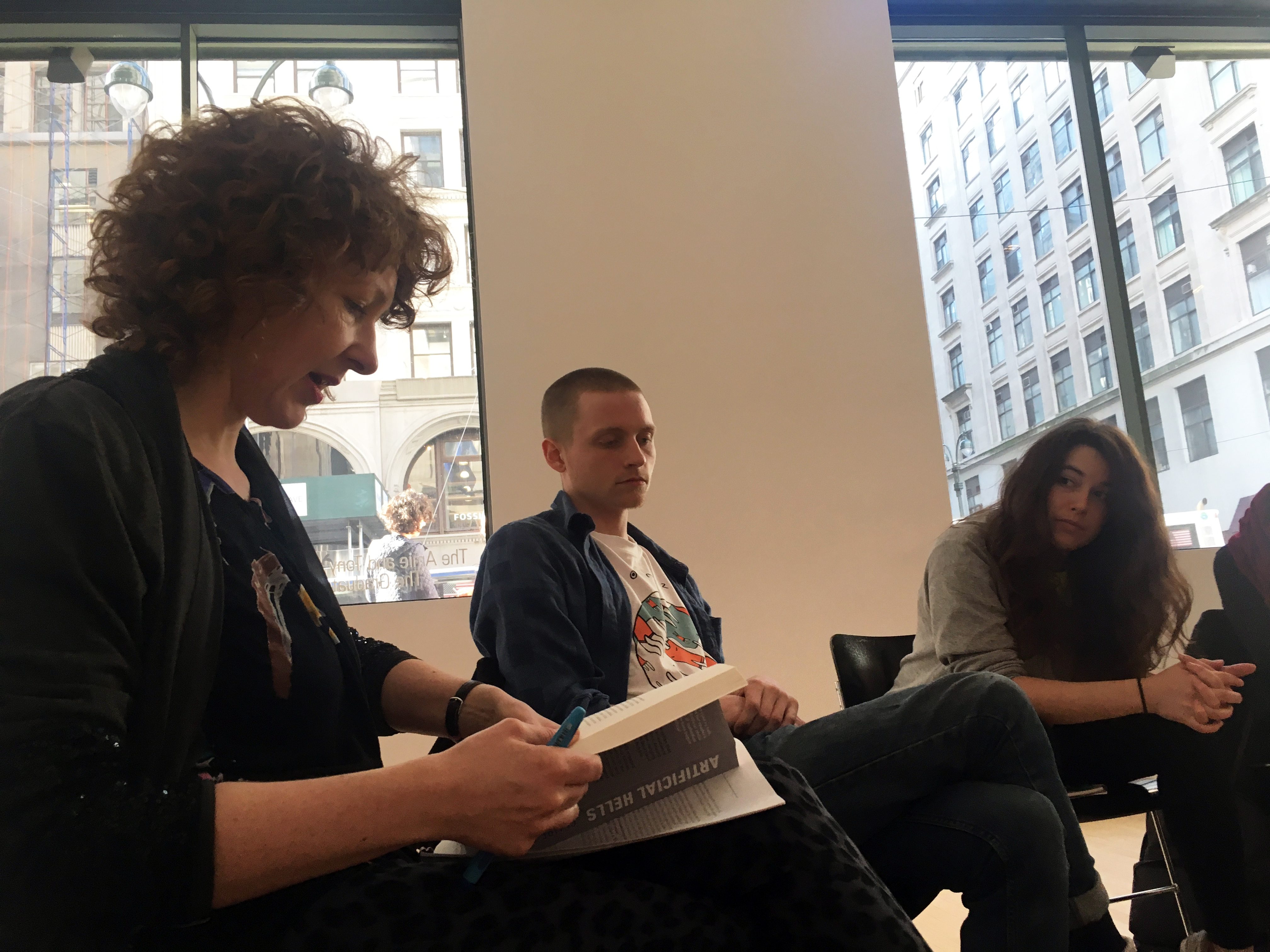 Claire Bishop at the James Gallery (thank you Katherine Carl) Photo Zaid Islam.
Claire Bishop at the James Gallery (thank you Katherine Carl) Photo Zaid Islam.
2/20 Week Three: [2/19] Monday class is on Tuesday this week only.] Meeting with Claire Bishop at the James Gallery on the ground floor of the, CUNY Graduate Center. (365 5th Ave:)
Readings for this week: Please read these three texts by Claire Bishop for the following class (in 2 weeks) :Chapter One and Two of Artificial Hells ( pages 1 to 76): Bishop“Antagonism and Relational Aesthetics” Claire-Bishop_Antagonism-and-Relational-Aesthetics* Generate at least one question or observation for each of the texts with page numbers/references for the class to refer to and to discuss with Professor Bishop.
2/26 Week Four: Meeting with Commissioner Tom Finkelpearl, Department of Cultural Affairs 31 Chambers Street, NYC, NY MAP
Reading for this week: introduction to What We Made: Finkelpearl
Also Finkelpearl interviews Mierle Laderman Ukeles: Fiinkelpearl_mierle_laderman_ukeles_interview
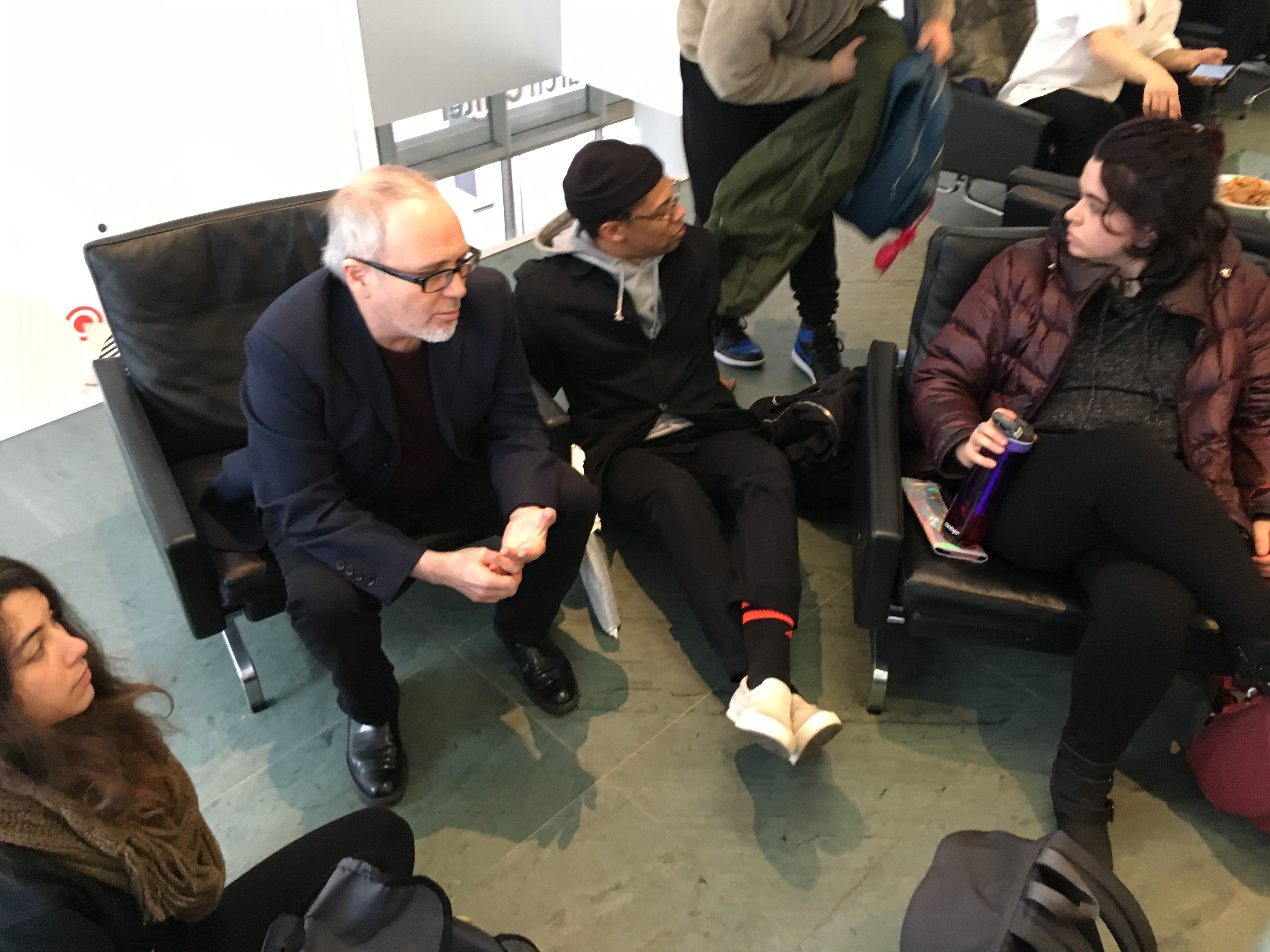
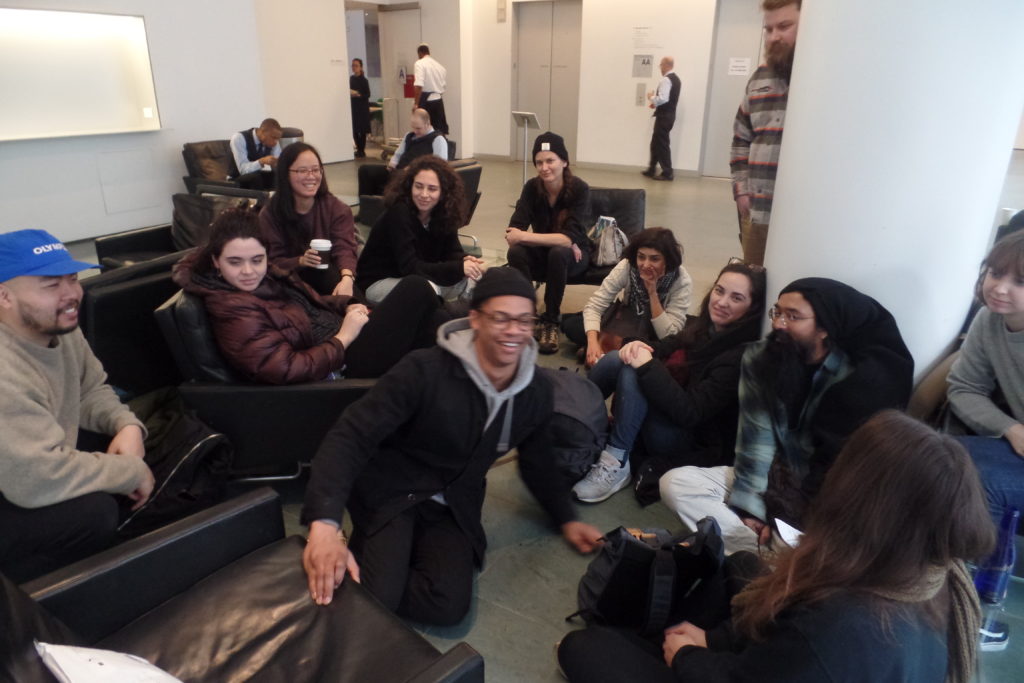 3/5 Week Five: Meeting at the MoMA with Pablo Helguera
3/5 Week Five: Meeting at the MoMA with Pablo Helguera
Reading for next week: Pablo Helguera introduction to Education for Socially Engaged Art Helguera
3/12 Week Six: Interventionist Art Collectives to Urban Regeneration 1968-2017
- Lucy R. Lippard, “LippardAWC,” 1970.
- Lovink & Garcia, “The ABC of Tactical Media,” 1997.
- gsholette “MysteriesofCreativeClass,” 2005.
Extra Readings:
- gsholette “Art.Debt.Oversuply.Panic.D&R.excerpt.Chpt.3c.” 2017
- G. Sholette, “Sholette_Art_After Gentrification” 2017.
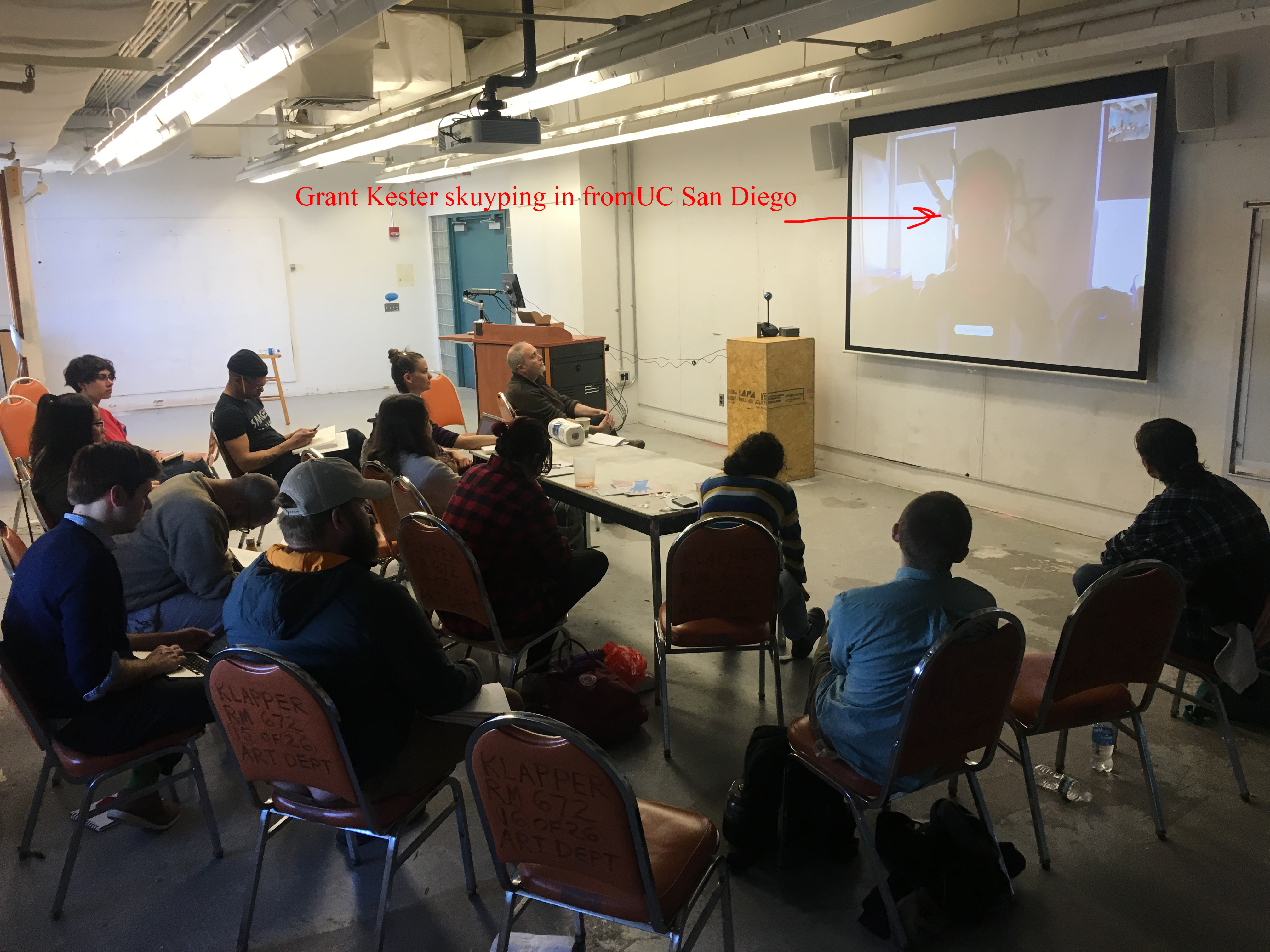 Photo Zaid Islam
Photo Zaid Islam
3/19 Week Seven: Skype meeting with Grant Kester at Klapper Hall
Reading for this week: introduction to Conversation Pieces Kester
3/26 Week Eight: We combine classes with Mark Read’s Arts of Intervention at NYU
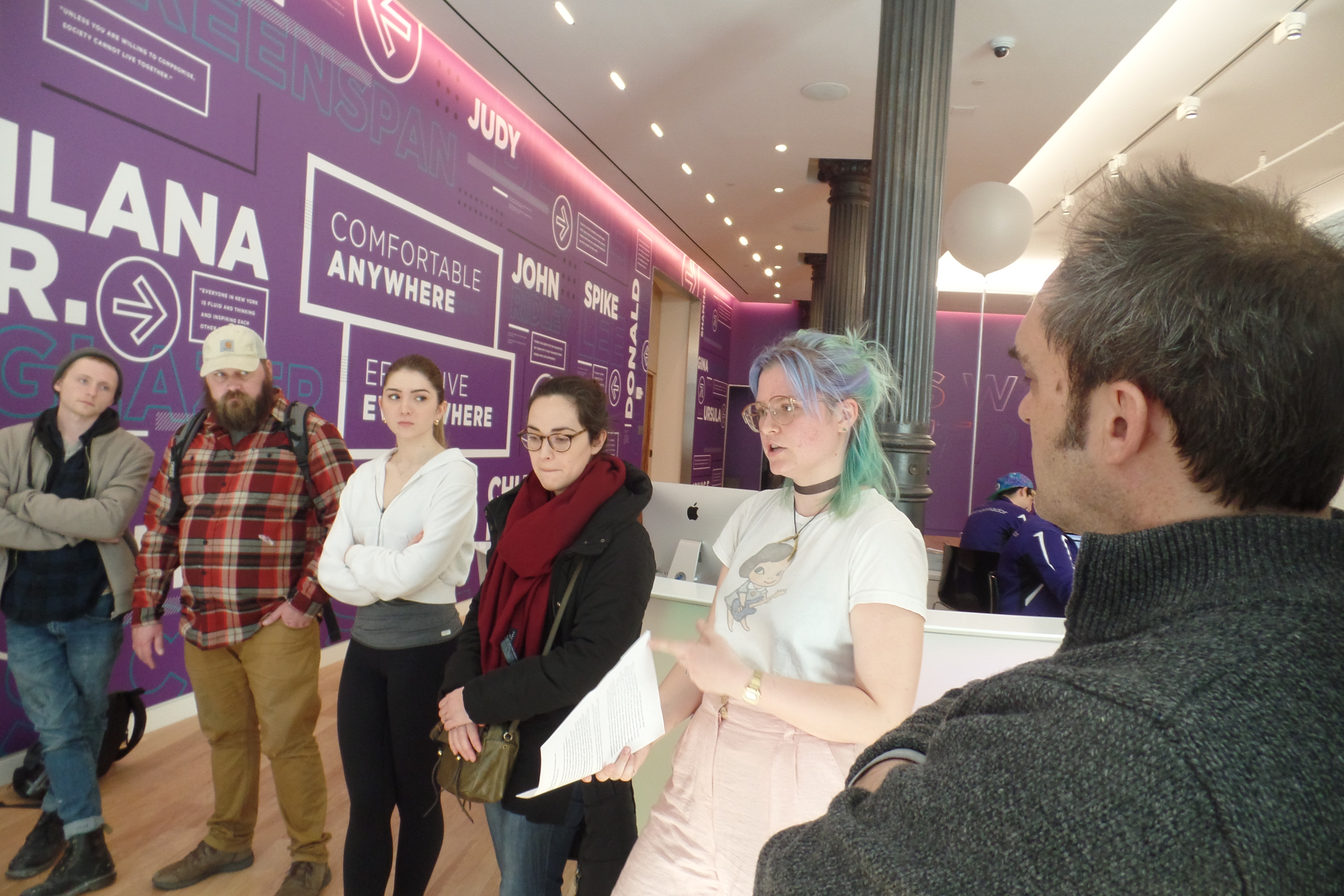
Stasia de Tilly addressing our combined classes during NYU Student Labor Action Movement (SLAM), and NYU Divest occupying the admissions center to demand greater transparency on the financial investments of NYU.
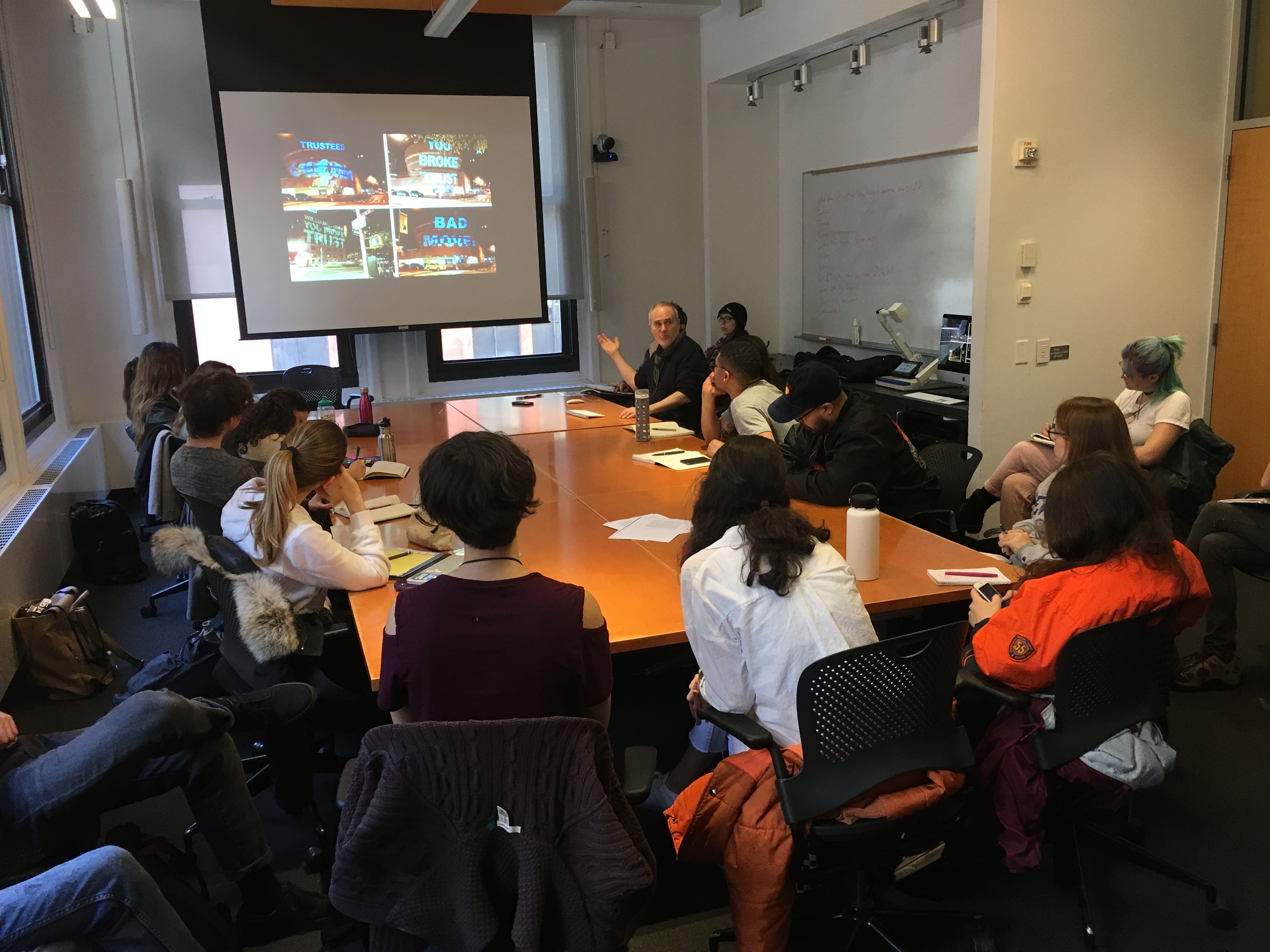 Presentation about Gulf Labor Coalition and Global Ultra Luxury Faction (GULF) at NYU.
Presentation about Gulf Labor Coalition and Global Ultra Luxury Faction (GULF) at NYU.
4/2 NO CLASS: SPRING BREAK
4/9 Week Nine: Special guest Professor Kurt Kauper will lead a discussion about the “return” of Abstract Expressionism at the Museum of Modern Art starting 2PM.
2PM SHARP at the Museum of Modern Art MoMA: The Lewis B. and Dorothy Cullman Education and Research Building at 4 West 54 Street [just west of 5th Ave]
Readings for two weeks from now on April 9 with Kurt Kauper:
David Geers (Peter Rostovsky):
-
- “Dear David” Geers PDF
- “Neo-Modern” 2013 Page 24 of Golden Age PDF
Roland Barthes (selections): The Neutral R. Barthes:
- Session of February 18, 1978, pp. 1-19
- Session of March 11, 1978, pp. 47-61
- Session of April 29, 1978, pp. 107-121
- Session of June 3, 1978, pp. 182-195
See also: Geers blog: http://spinninggeers.tumblr.com/
SPECIAL EVENT:
Mel Chin: | Queens Museum Opening SUNDAY April 8
4/16 Week Ten: SPECIAL LEARNING MODULE with Jeff Kasper: Situating social practice and the ethics of participatory art & research* More Art will give a presentation about its portfolio of curating/producing/commissioning socially engaged art. MORE ART 232 East 11th – buzz Floor 1 Between 2nd & 3rd Ave
Readings:
- Caitlin Cahill, Farhana Sultana, et al. “Participatory Ethics: Politics, Practices, Institutions.”ACME: An International E-Journal for Critical Geographies 6, no. 3 (2007): 304–18. Participatory_Ethics_Politics_Practices
- Rancière, Jacques, and Gregory Elliott. “Chapter 1” and “Chapter 3” in The emancipated spectator. London: Verso. 2009.
Suggested Readings:
- Jan Cohen-Cruz. An Introduction to Community Arts and Activism (2002).
Alexis Frasz and Holly Silford. “Mapping the Landscape of Socially Engaged Artistic Practices” #artmakingchange, September 2017.
FOR ADDITIONAL READINGS PROPOSED BY JEFF KASPER please see below **
4/23 Week Eleven: MEET AT KLAPPER
4/30 Week Twelve: MEET AT KLAPPER
5/7 Week Twelve: MEET AT KLAPPER
SPECIAL FINAL CLASS: Friday, May 18:
2PM PERFORMANCE EVENT ** Important notice: performance and presentation re-scheduled for the following Friday May 18 on Wall Street, Manhattan
4PM PRESENTATIONS BY WORKERS ART COALITION &BULLET SPACE 292 EAST 3RD STREET (Between Ave. C & D, NYC).
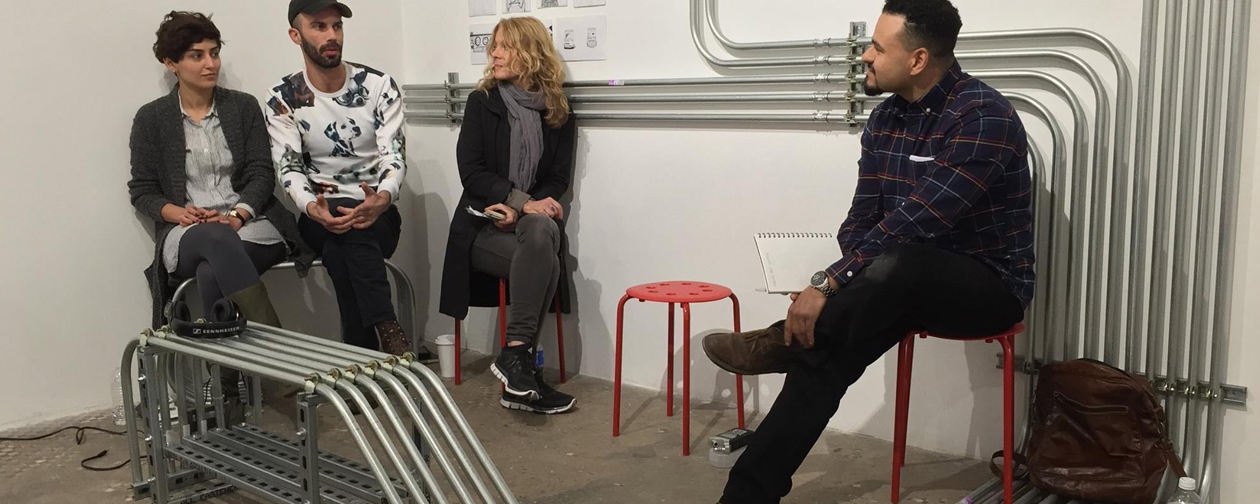 Setare Arashloo, Paul Vance, Barrie Cline, Jamie Lopez of Workers Art Coalition
Setare Arashloo, Paul Vance, Barrie Cline, Jamie Lopez of Workers Art Coalition
A Project by Workers Art Coalition about the Ladder of Participation for the exhibition Citizen Participation at ABC NO RIO + Bullet Space
+++++++++++++++++++++++++++++++++++++++++++++++++++
** ADDITIONAL RESEARCH MATERIAL FROM JEFF KASPER:
Case Studies: Cultural Organizing, and Curating Social Practice
- Paul J. Kuttner. “What is Cultural Organizing?”
- Michael G. Birchall, Socially engaged art in the 1990s and beyond CLICK
- Elizabeth M. Grady. Process as Form: Response to the ICI Curatorial Convening on Socially Engaged Art. Independent Curators Internaitonal. 2017.
Further Research:
- Natural Occurring Cultural Districts: https://nocdny.org/
- Sharon Irish. “Book Excerpt – Suzanne Lacy: Spaces Between”
Productive Conflicts, Analyzing Relationships, and Other Critical Frameworks for Evaluating Social Practice
Readings:
- Rosalyn Deutsche, “Art and Public Space: Questions of Democracy,” Social Text, Vol. 33, 1992: pp. 34–53.
- Dominic Willsdon. “Where Are We and What Time Is It? On Beginning to Curate Suzanne Lacy.” A Blade of Grass. 2017.
- Jan Cohen-Cruz. “The Imagination and Beyond: Toward a Method of Evaluating Socially Engaged Art.” Future Imperfect. A Blade of Grass. 2017.
Further Research and Readings
- Mark J. Stern, and Susan C. Seifert.“Civic engagement and the arts: issues of conceptualization and measurement.” University of Pennsylvania, School of Social Policy & Practice, 2009.
- Ernesto Pujol. “The Cult of Creative Failure” Brooklyn Rail , October 5, 2017.

